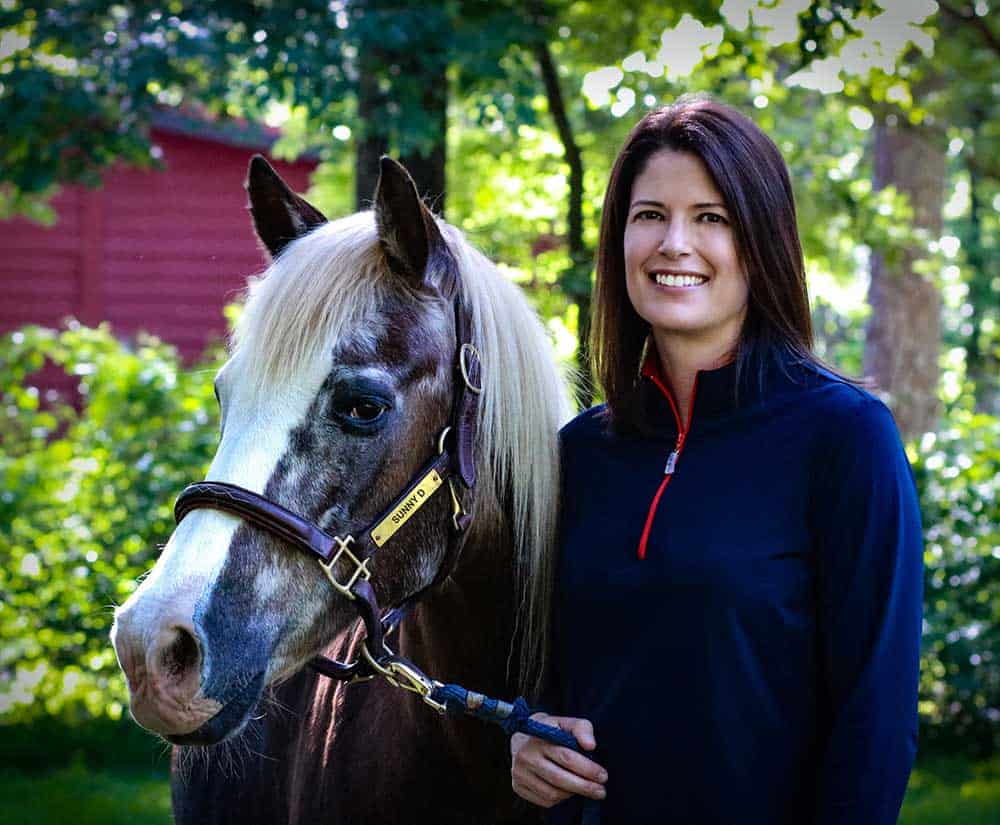Feeding Off-Track Thoroughbreds
- Posted by Kelly Vineyard, MS, PhD

Q. I am a first-time OTTB owner and recently purchased my horse directly from the racetrack. She is going to let down over the winter before I start riding her again in the spring. How can I ensure she is receiving proper nutrition during this transition?
A. Congratulations on starting the journey with your new off-the-track Thoroughbred! These horses make excellent riding partners, and you won’t find a breed with more heart. The best horse I ever owned was an OTTB!
When creating a nutrition plan for racehorses moving into a new career, I like to think of the transition as occurring in three phases. Phase 1 is the immediate transition period lasting approximately one month, during which time the horse physically leaves the racing environment and begins his new life as a non-racehorse. Phase 2 follows, lasts from one to six (or more) months, and is the “stabilization” period when the horse is actively acclimating to his new life. Phase 3 begins when he has successfully transitioned and is marked by an ability to maintain a healthy weight and the proper mindset to train for his new career.
The biggest risk for potential problems comes with Phase 1, because there are multiple changes going on at once. From a nutritional standpoint, it’s important to understand that most racehorses are fed large amounts of grain concentrate, and many consume more grain than forage to meet their high energy demands. Once they are no longer racing, they need less energy and more forage in their diet. A slow transition to a forage-based ration by reducing grain and increasing hay at a rate of no more than one to two pounds per day will help minimize digestive disturbances associated with drastic dietary changes. This gradual transition may take two weeks or more. Phase 1 is also a good time to address deworming, farrier, and dental care. In addition, up to 90% of racehorses have gastric ulcers, and providing extra gastric support through medication and/or a research-backed gastric support supplement containing seaweed-derived calcium will also help with this transition.
The nutrition plan for Phase 2 involves continued feeding of a forage-based diet. The daily forage amount provided should be a minimum of 1.5-2% of the horse’s body weight (BW) per day, but more is better because OTTBs are rarely overweight at this point. Incorporating alfalfa into the forage component of the diet is recommended because the high mineral content provides gastric buffering and it’s a great source of easily digestible fiber.
Depending on the horse’s current body condition score (BCS) and energy demands, feeding a ration balancer or a concentrate feed is needed to fill in the nutritional gaps of forage. In my experience, few OTTBS at this stage do well with a ration balancer, but if they are at a BCS of 6 or more, then it’s a good choice. In most cases, selecting a high-quality and calorie-dense fat- and fiber-added feed with a controlled soluble carbohydrate content is the best way to provide the additional calories, protein, and essential nutrients needed for overall health and weight maintenance and/or gain during this phase. Follow the manufacturer’s feeding instructions based on body weight and activity level to make sure horses are getting all the nutrients they need. If the horses are not in any work, you can still feed them according to at least light work recommendations if they need to gain weight, since gaining weight also requires extra calories (the more weight they need to gain, the higher “work level” you can feed to). Split the daily ration into multiple meals per day, and avoid feeding more than 0.5% BW in a single meal to avoid overwhelming the digestive system. Continue to provide supplemental gastric support and watch for any changes in appetite, which may indicate the presence of gastric ulcers or other medical conditions that require veterinary attention. You’ll know you’ve reached Phase 3 when your horse has reached a healthy weight and body condition and maintains it well.
The Phase 3 nutrition plan may or may not look like Phase 2, depending on the specific situation. It may be that your OTTB will do well with his Phase 2 ration on a long-term basis, with adjustments in feeding rates made to accommodate changes in exercise level that would require either more or less energy in the diet. Some OTTBs do become easy keepers once they have settled into their new lifestyle, so moving to a ration balancer may be the best option for them on a long-term basis. Essentially, Phase 3 is when you start thinking about feeding your OTTB like you would any other breed of horse in any discipline, which is to feed plenty of good-quality forage paired with a nutritionally balanced product designed to supply essential nutrients missing in forage along with the correct level of calories needed to maintain a healthy body condition.

Written by:
Kelly Vineyard, MS, PhD
Related Articles
Stay on top of the most recent Horse Health news with
















One Response
I too, am a first time OTTB owner( best decision ever!!) After a rough start on wrong info re: nutrition, started feeding him Purina Senior feed. He gets it 3-4 times a week in the summer(when I can get out to the barn) and twice a day in the winter(he is stalled at night) Also has free forage and hay 24/7. He looks absolutely amazing!